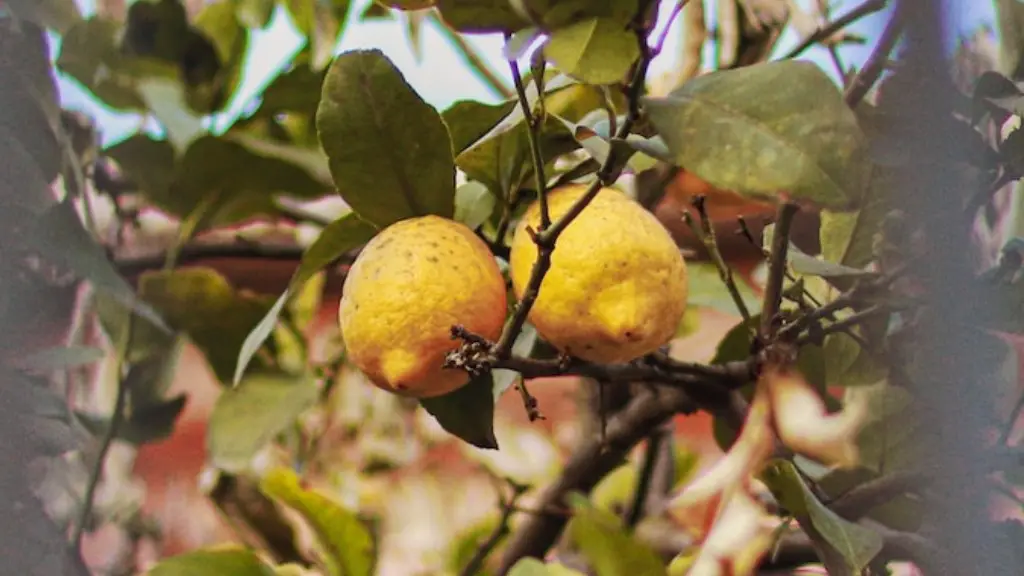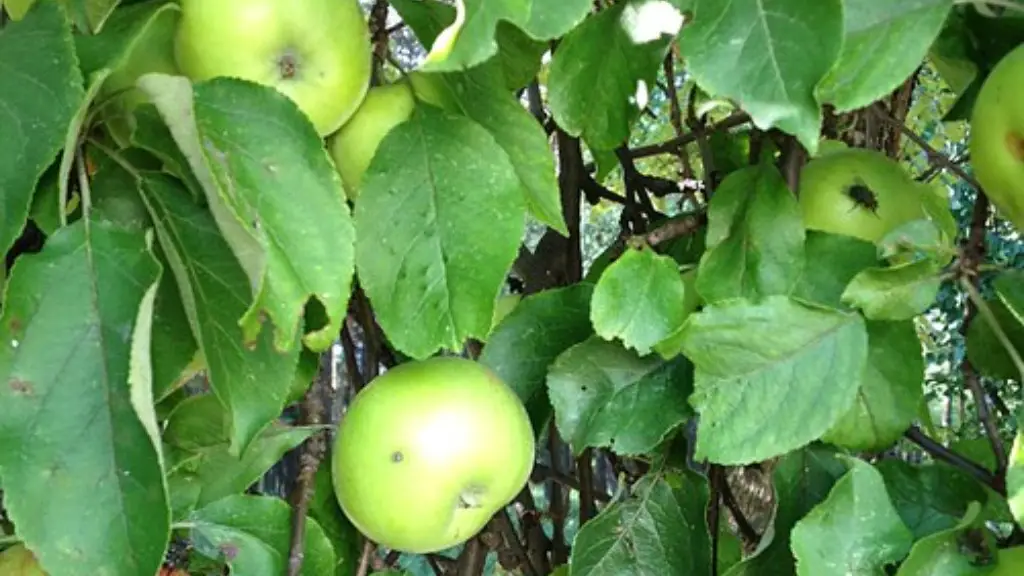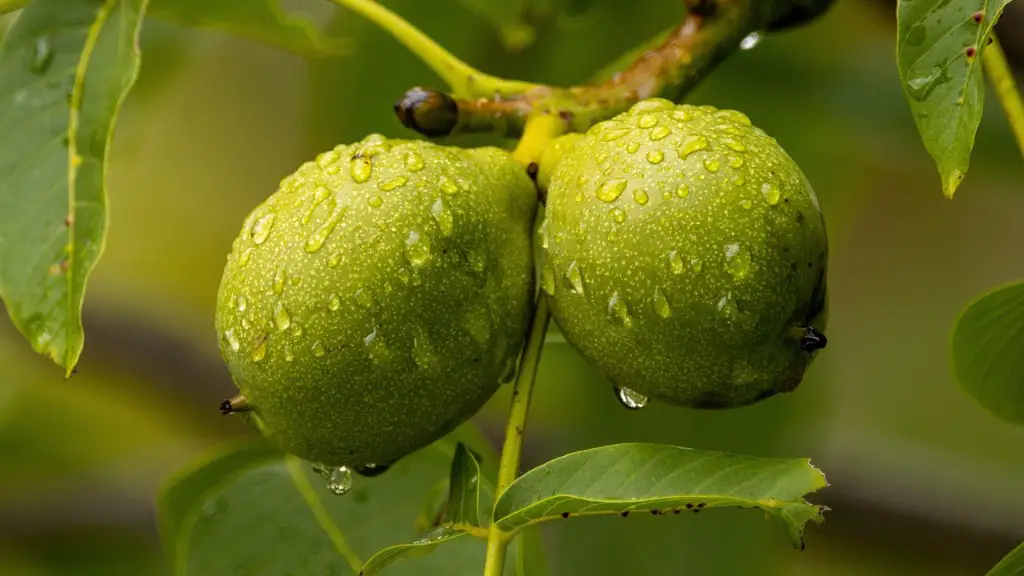Contrary to popular belief, lemons splitting on a tree is not caused by too much water or a lack of fertilizers. In many cases, it’s due to several factors, such as improper planting, incorrect pruning, disease or pest infestation, excess herbicides, or the wrong environment. The following sections will examine the various causes for splitting lemons and offer prevention tips.
Living Conditions
The environment in which a lemon tree lives can play a significant role in whether it will split or not. Trees growing in cold temperatures, high altitudes and soils that are too fertile can be at risk of splitting. Additionally, lemon trees planted in wet or poorly drained soils are prone to fruit splitting. The risk of splitting can be reduced by keeping the tree in a warm and dry environment.
Moreover, the tree’s root system must be healthy and robust to allow optimal water uptake, to promote healthy fruit and to reduce the risk of splitting. A lemon tree’s root system should be provided with a minimum of 16 inches (40 cm) of soil depth. Additionally, to reduce potential splitting, the tree should be situated in a shaded area with adequate air movement.
Water
Lemons are high in sugar content and water is essential for proper sugar composition. Too little or too much water can both cause a lemon to split. Lemons require a moderate amount of water, usually between an inch (2.5 cm) and two inches (5 cm) per week. It’s important to avoid excessive amounts of water, as this can cause large splits between the two halves of the fruit. Over-watering can also interfere with the lemon’s natural hardening process, which lengthens the ripening process, leaving the fruit at risk of splitting.
To regulate water, use a soil moisture meter to gauge the moisture content. Additionally, water the tree at the base to avoid water getting on the fruit, as this can cause splits or rot. Finally, avoid prolonged dry periods, especially in mid-to-late summer when lemons are ripening.
Pruning and Fertilizing
Improper pruning methods can increase the risk of splitting. Once established, lemon trees should only be pruned during their dormant period of Fall to just after bud-break in the Spring. Avoid pruning outside this period, as this reduces the risk of pest and disease infestations that can cause splitting on the fruit.
Fertilizers should be used sparingly, as overfertilization can encourage excessive vegetative growth at the expense of the crop. Generally, a slow-acting fertilizer containing nitrogen, potassium and phosphorus is best. Spread the fertilizer at the base of the tree and water it into the soil well. It’s best to only fertilize during the tree’s dormant period, as this gives the tree time to absorb it without unnecessary stress.
Pest and Disease Issues
Pest infestations, such as thrips, beetles and caterpillars, can cause wounds on the fruit, making it susceptible to splitting. Additionally, fungal and bacterial diseases, such as canker, leaf spot and fruit scab, can damage the rind of the lemon and make it prone to splitting. To prevent pest and disease infestations, regularly check the tree for signs of damage and treat accordingly.
To reduce the risk of insect infestations, use beneficial insects, such as ladybugs, green lacewings, parasitic wasps and praying mantises. If signs of fungus or bacteria are present, use an organic fungicide or bactericide. Organic sprays containing neem oil, garlic and horsetail can also be effective.
Herbicides
Excessive use of herbicides can cause lemons to split. This is because many herbicides contain chemicals that can damage the tree and render the fruit susceptible to splitting. If herbicides are used, it’s important to carefully follow the instructions on the product label and to only use as instructed by the manufacturer.
To reduce the risk of chemical damage to the tree, consider using natural methods to control weeds, such as hoeing or mulching. Additionally, spot-treat weeds with an organic herbicide or consider hand-pulling them. It’s best to use these methods within the lemon tree’s root zone, as this will reduce the risk of injury to the tree.
Mulching
Mulch is a protective material that helps to retain moisture in the soil and reduce water evaporation. It also helps to keep weeds in check and to protect the roots of the tree against extreme temperatures. To mulch, place several inches ( cm) of material over the soil around the base of the lemon tree, avoiding contact with the trunk. Suitable materials include grass clippings, shredded bark, straw and hay.
Harvesting and Storing
When harvesting lemons, always use sharp pruners and avoid bruising the fruit. To reduce the risk of splitting, leave some fruit on the tree and pick the rest in stages. When harvesting, keep an eye out for evidence of pest or disease damage, checking for any signs of splitting. Lemons should be stored in a cool place and out of direct sunlight.
Pest Repellent
The use of pest repellents can help reduce the risk of splitting. Natural pest repellents, such as neem oil, are safe and effective against a variety of pests. It’s best to apply the product twice a week for four weeks, observing the tree for any signs of damage or splitting. Additionally, lime-sulfur and sulfur-based fungicide mixtures have also been reported to reduce the risk of splitting in lemons.
Organic Sprays and Insecticides
Organic sprays and insecticides can also help reduce the risk of splitting. Plant essential oils, such as clove oil, are effective against a variety of pests and can be sprayed directly onto the tree to repel pests. Neem oil and garlic sprays can also be used to deter pests. For particularly severe infestations, contact insecticides, containing the active ingredients of pyrethrins or spinosad, can be used to effectively manage pests that cause lemons to split.
Pollination
At the risk of splitting, lemons need to be properly pollinated. Without adequate pollination, the seeds become highly fragrant and the skin thins out, which can cause the fruit to split. To ensure proper pollination, honeybees and other pollinating insects must be present. If there’s a lack of pollinators in the area, hand pollination can be done using a paintbrush or a q-tip.
Picking and Processing
Clicking and processing the fruit at the right time is essential to reducing the risk of splitting. As lemons mature, the fruits become more susceptible to splitting. Therefore, when it comes time to pick the lemons, it’s important to do so with care. Generally, the fruit should be completely yellow and firm for optimal ripeness. Process the lemons as soon as possible after harvesting, to reduce the risk of splitting.
Essential Oils
Essential oils, such as lemon balm, lemongrass and clementine, can be used to reduce the risk of splitting. These oils are natural pest and disease repellents that can be added directly to the soil and surrounding area of the lemon tree. They are safe and effective in managing a variety of pests and disease, and can also help to restore the health and vigor of the tree.




